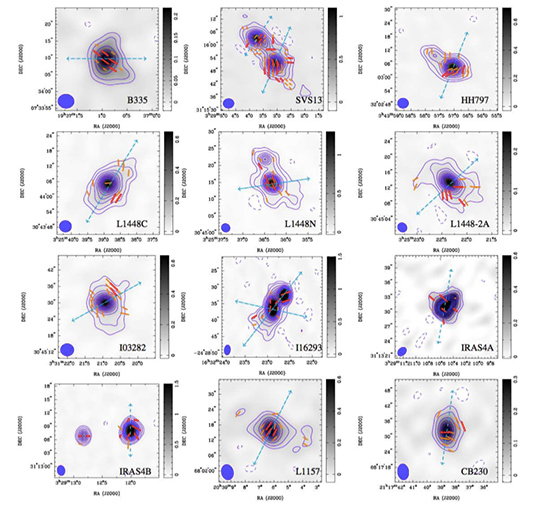Star Formation: Low-Mass:
The Influence of Magnetic Fields
Magnetized models of star formation show that magnetic fields have the potential to strongly effect the the outcome of dense core collapse, in particular through the process of "magnetic breaking" where a sufficiently strong field provides a conduit to remove angular momentum from the system. This process can prevent fragmentation and the develoment of rotationally supported disks. SMA observations of the linear polarization of thermal dust emission have probed the magnetic field topology in low-mass Class 0 protostars on scales of 500 to 1500 AU (Figure 4), showing a relationship between the orientation of the magnetic field and the rotational energy of the surrounding cores (Galametz et al. 2018). In particular, misalignments of the field with the rotational axis traced by the outflow direction are found preferentially in protostars with high rotational energy. Moreover, misalignments are round preferentially in protostars that are close multiples or harbor large circumstellar disks. Taken together, these observations suggest that the topology and strength of the magnetic field at the core scale impacts the outcome of collapse and plays a significant role in the formation of multiple systems and disks.

SMA 850 micron observations of 12 deeply embedded low-mass protostars showing dust continuum emission (blue contours, at 3,5,10,20,30... x rms) and magnetic field orientation (red and orange line segments, derived from polarization angles assuming 90 degree rotation). The blue lines show bipolar outflow directions, determined from images of CO emission.
